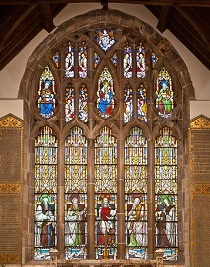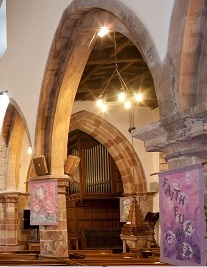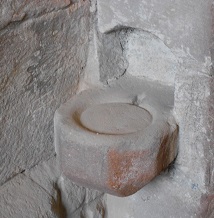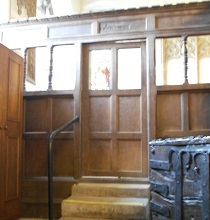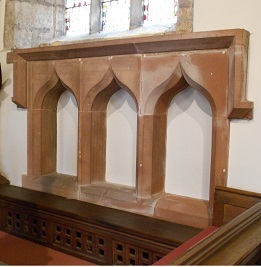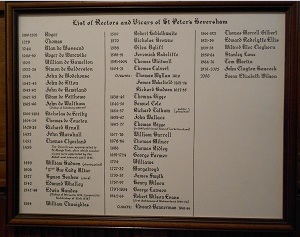|
Chancel |
15th-century east window |
16th century arches |
 Early 16th century piscina – a stone basin (with a drain), near the altar, in Catholic and pre-reformation churches, such as St Peter’s. It was used for draining water that had been used in a mass. You can see the piscina in the recess, near the entrance of the Dallam Chapel.
Early 16th century piscina – a stone basin (with a drain), near the altar, in Catholic and pre-reformation churches, such as St Peter’s. It was used for draining water that had been used in a mass. You can see the piscina in the recess, near the entrance of the Dallam Chapel.
The Levens (north) chapel
|
Restored in 1980 |
14th century |
Beautifully carved |
|
Dallam (south) chapel |
South aisle |
|
The chest at the east end of the north aisle |
17th century patens, |
Doors
|
The ironwork on the main door |
The vestry door is |
Pulpit
Archdeacon Evans (the first Archdeacon of Westmorland and Vicar of Heversham) and his 3 sisters gave the pulpit that we have now, to replace the 1849 3-decker pulpit.
|
The lectern |
The organ |
The register
The surviving part of the original register begins at the year 1607, and is, with other registers, in the Kendal Archive.
The living of Heversham
This living, formerly the gift of St Mary’s, York, is now in the hands of Trinity College, Cambridge.
The list of rectors and vicars of Heversham, since 1180, is by the main exit of the church.
(Click the image to enlarge it.)
Church history
If you'd like to ask about any aspect of St Peter's Church history, church records and so on,
send an email message to Roger Bingham, local historian and Church Reader,

